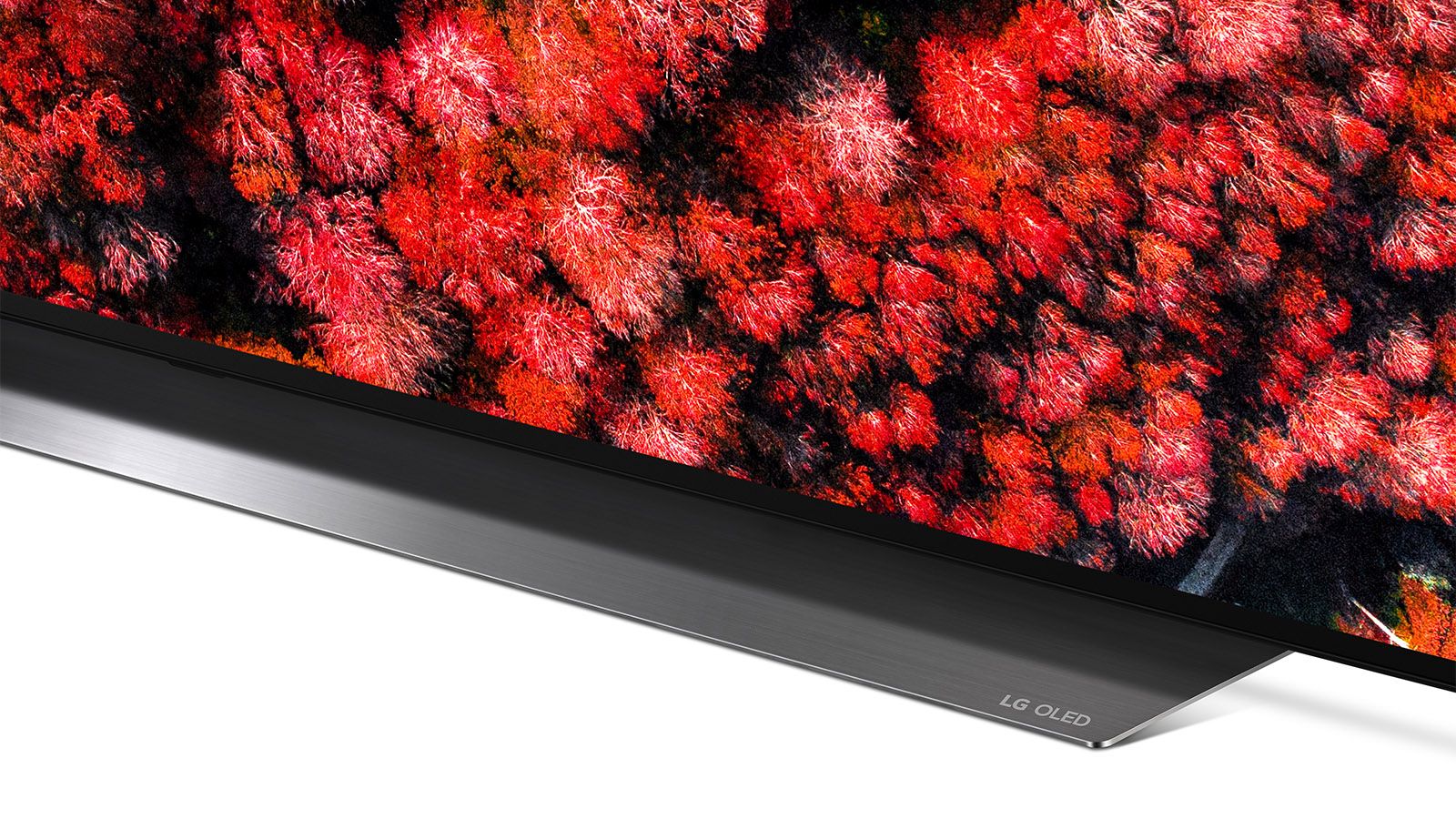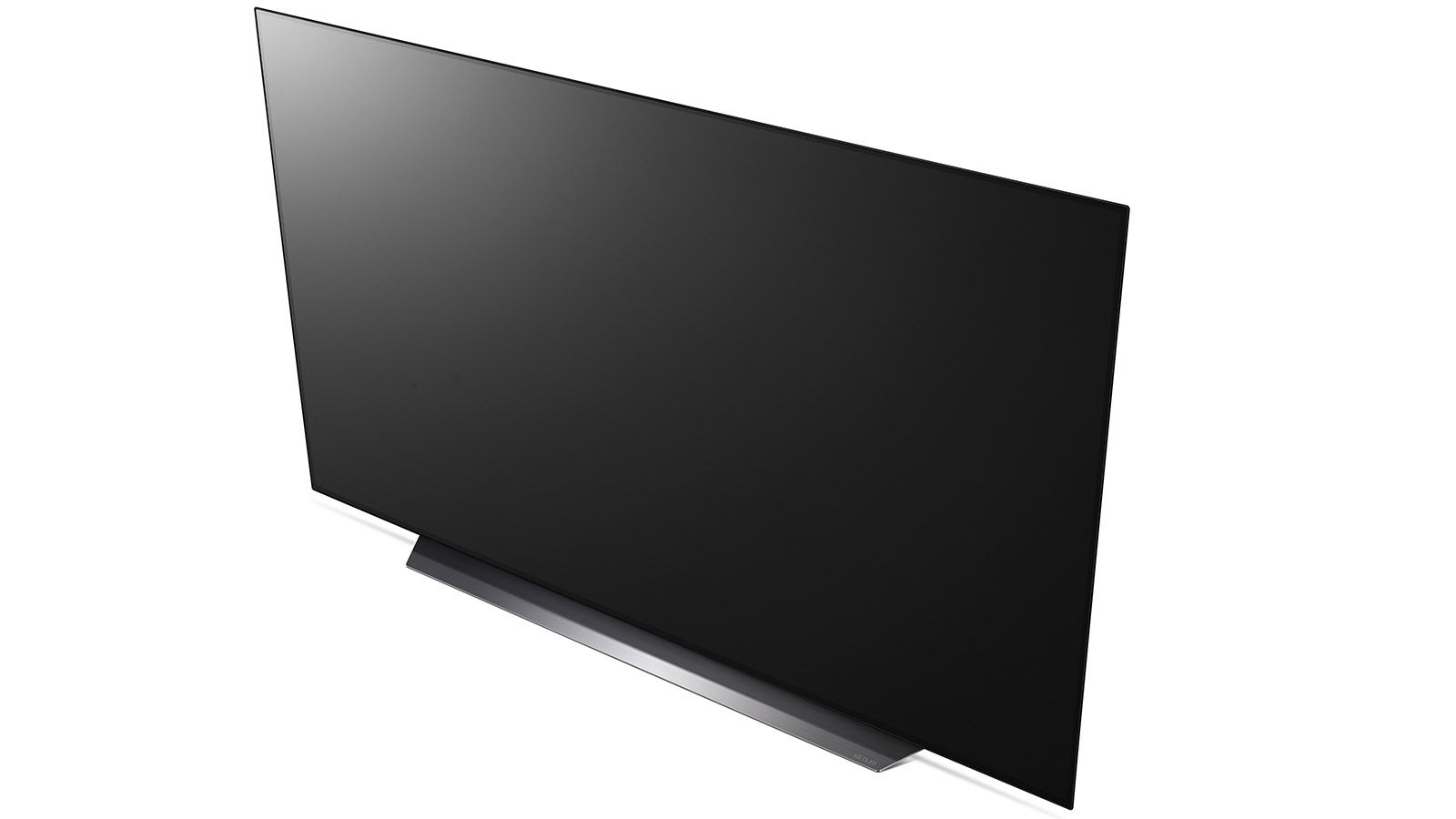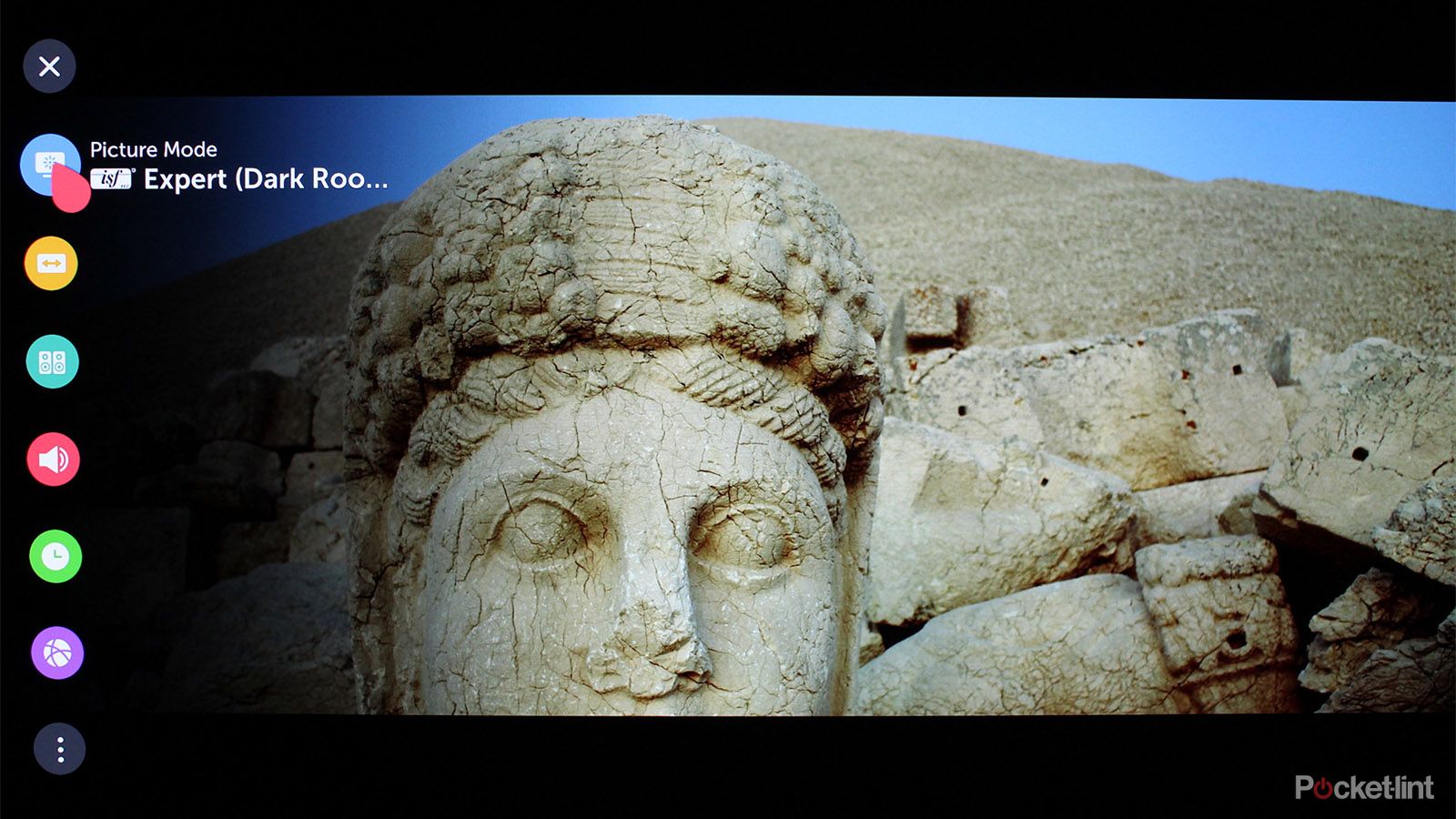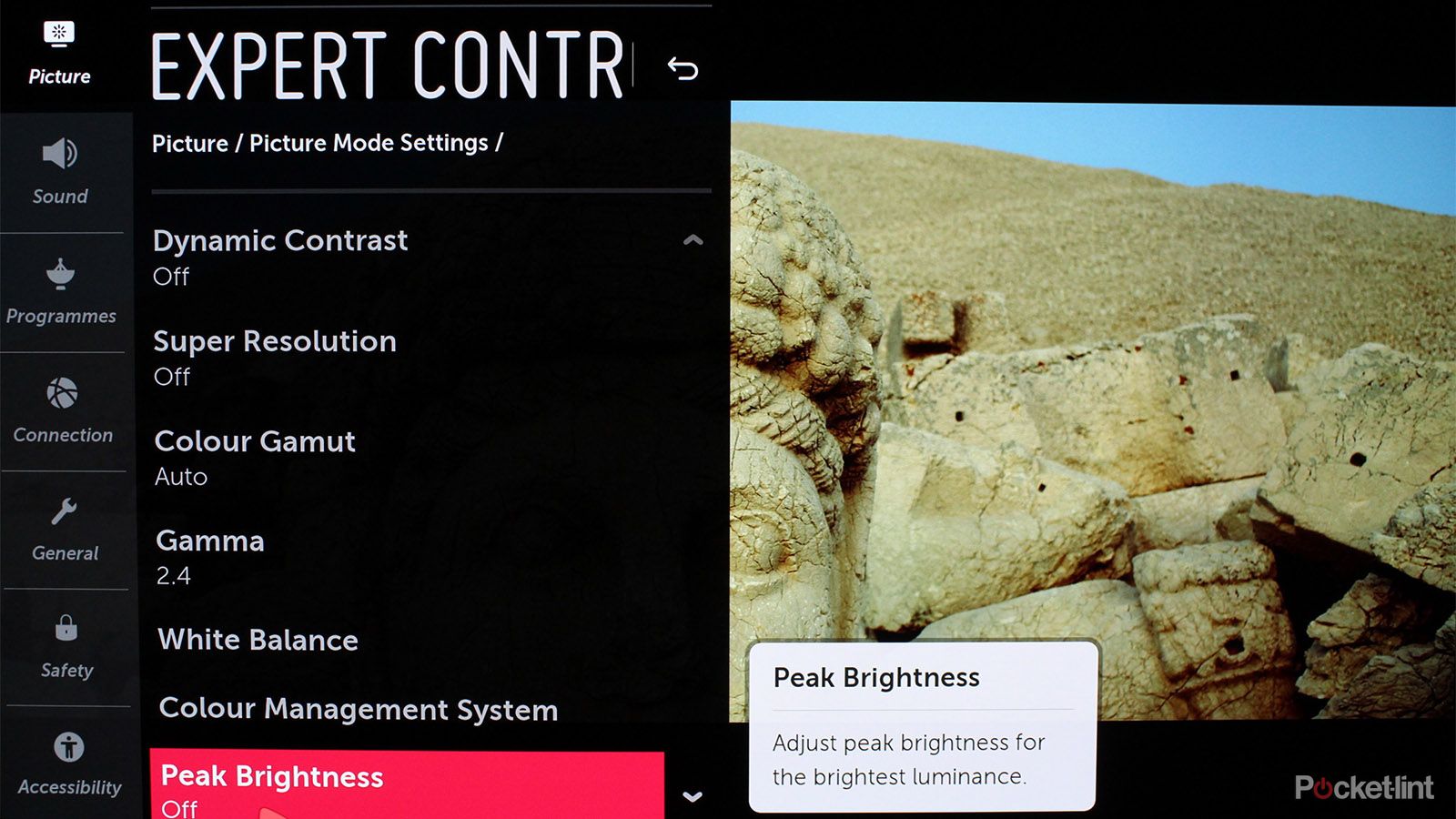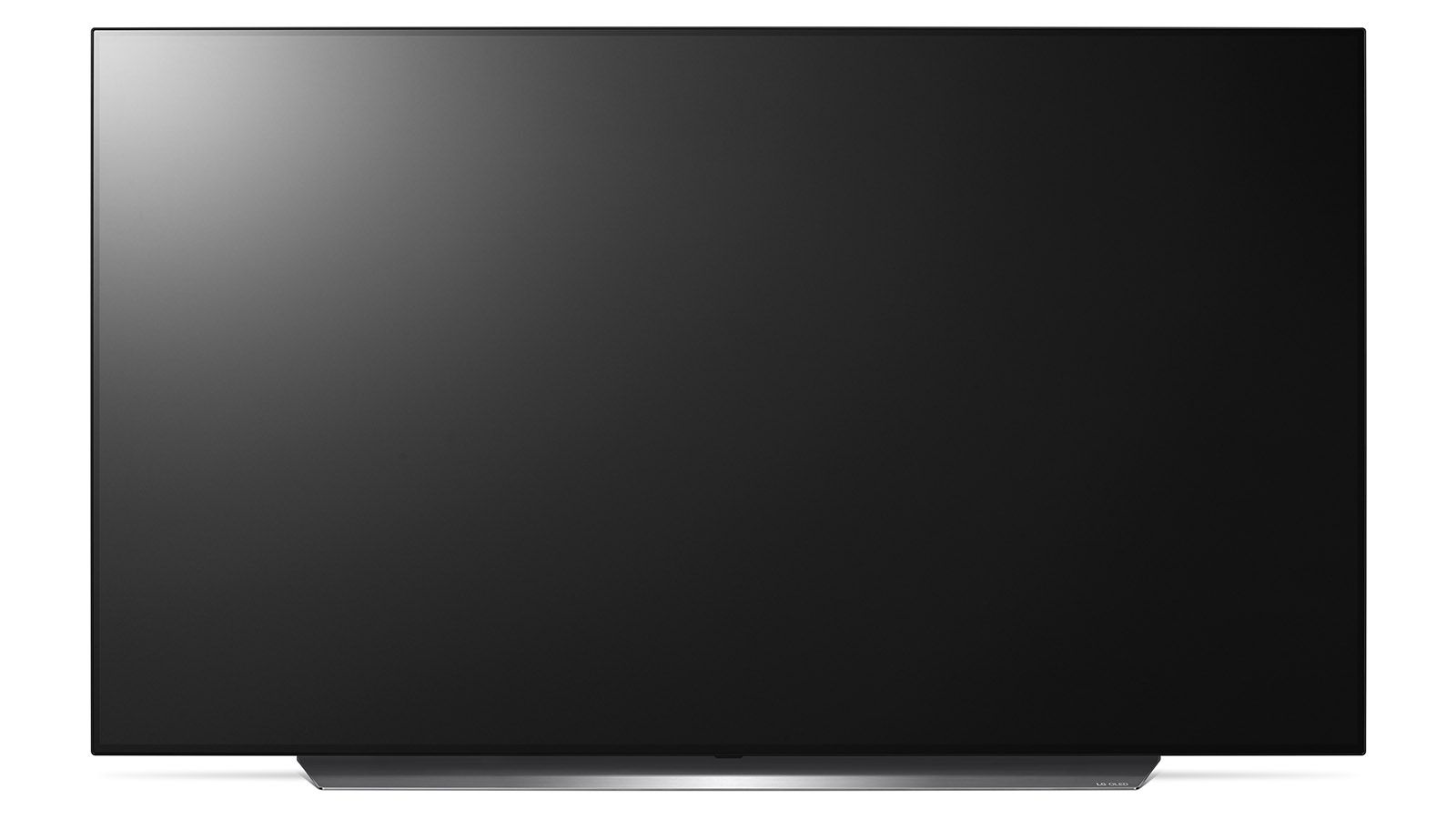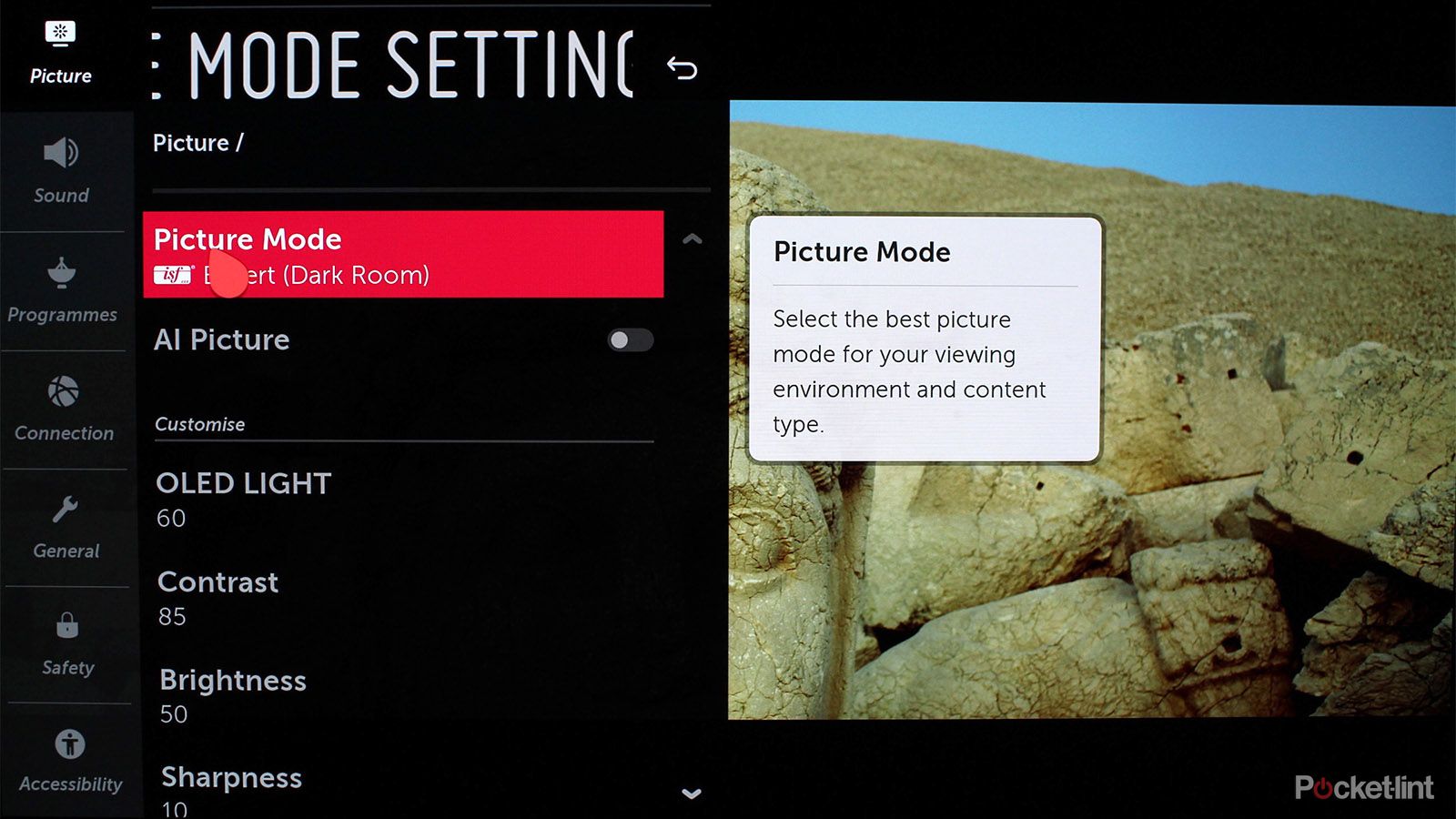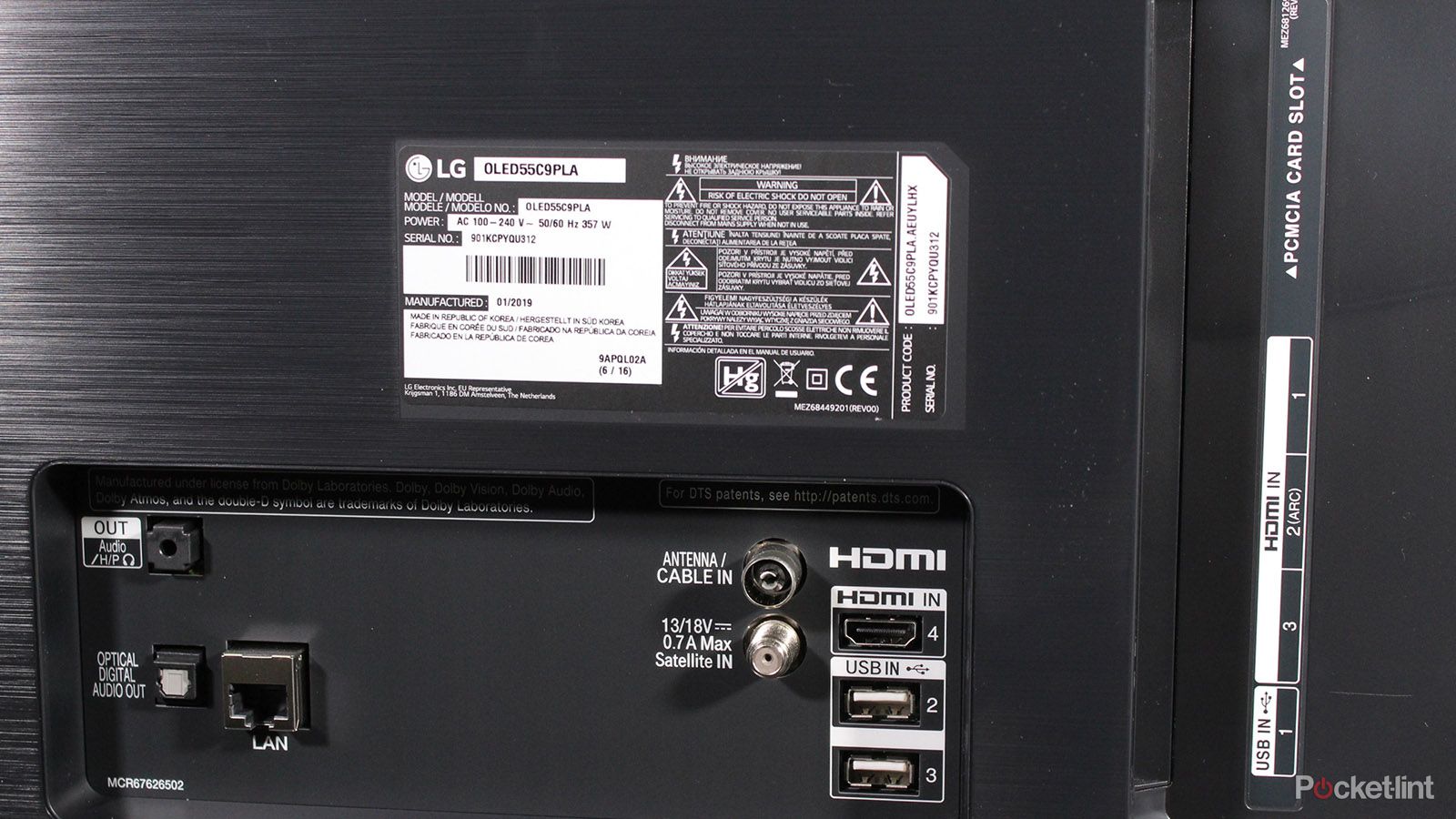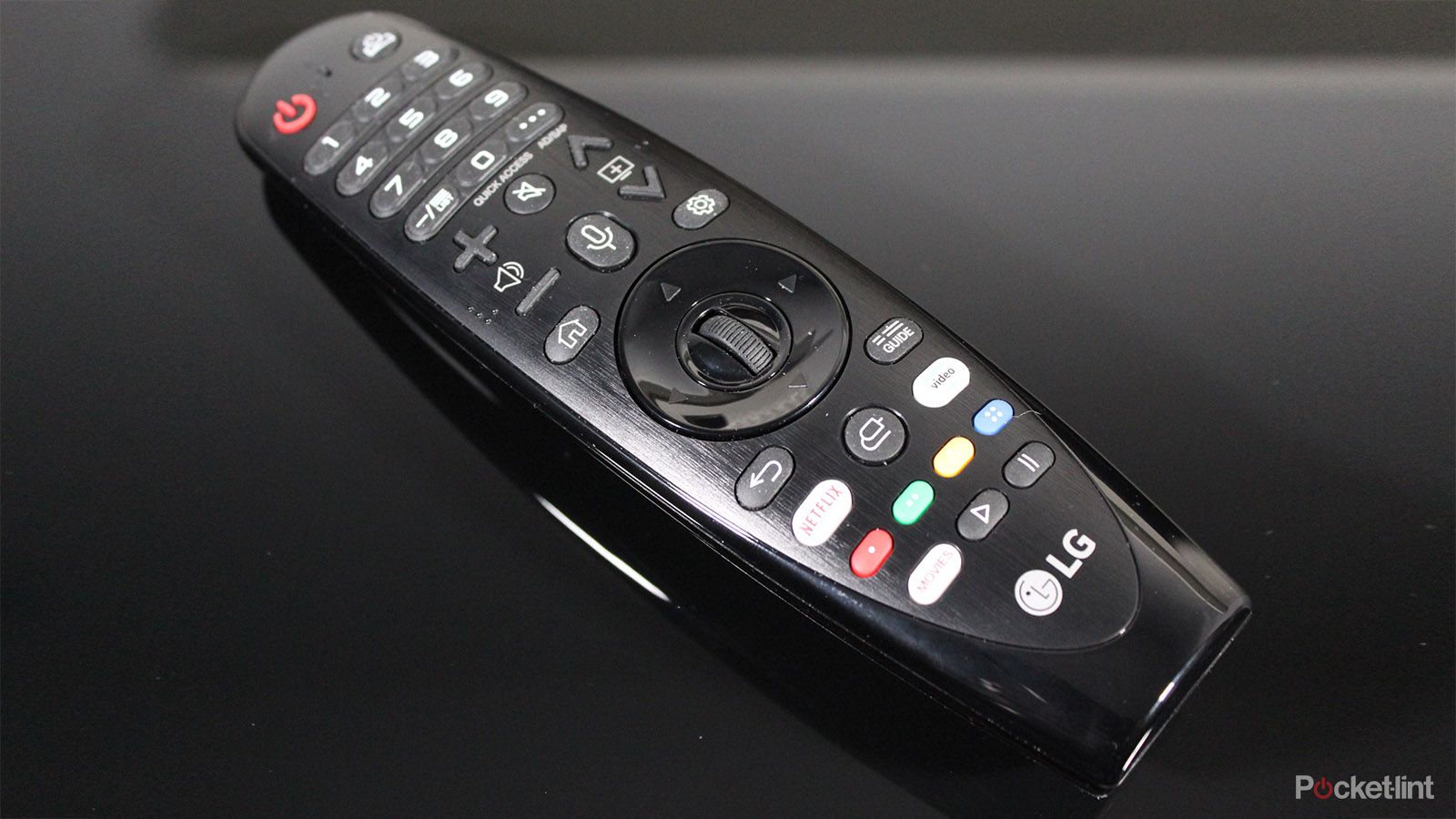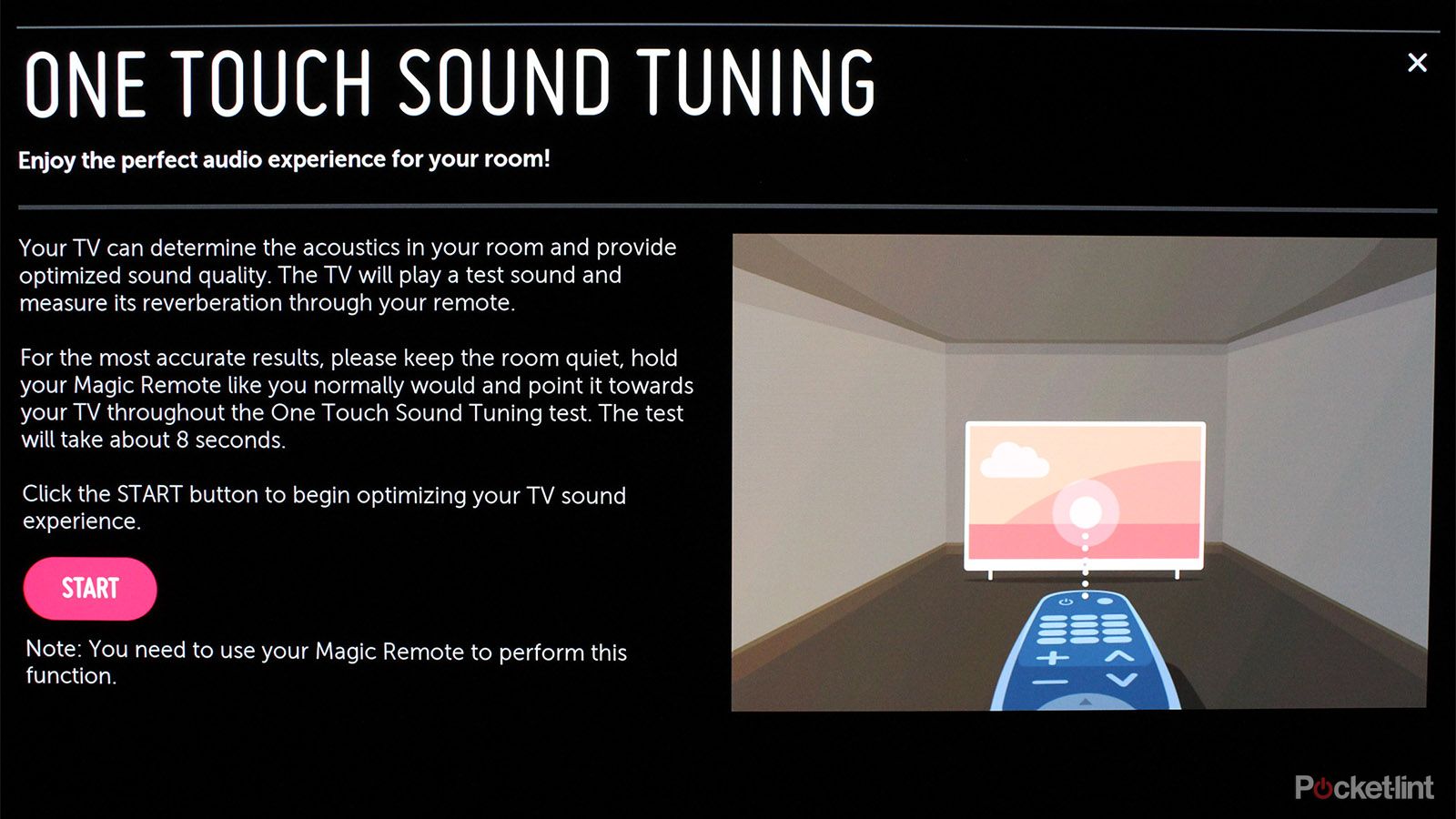LG's dominance of the OLED TV market continues unabated, but with every manufacturer apart from Samsung now offering their own models, how long can it last?
The C9 is LG's answer to this question. It sits in the middle of the company's 4K OLED TV range, above the entry-level B9 with its less sophisticated Alpha 7 processor and below the rest of the line-up, which have the same picture performance as the C9 but various high-end sound and cosmetic upgrades.
LG addresses the issue of competition by offering a smarter operating system that is both intuitive and comprehensive. It also pushes the envelope in terms of picture and sound quality, thanks to HDMI 2.1 and added AI wizardry. The range consists the 55-inch OLED55C9PLA (£2,499), 65-inch OLED65C9PLA (£3,299) and 77-inch OLED77C9PLA (£7,499).
Our quick take
The LG C9 is one of the smartest, highly-specified, and comprehensively-featured TVs that we've ever tested. The OLED 4K panel delivers all the detail, deep blacks, accurate colours and wider viewing angles we'd expect, while the new AI-enhanced processing takes the image quality to another level. The inclusion of HDMI 2.1 also adds a cheeky spot of future-proofing.
The operating system remains intuitive but thanks to further AI enhancements, it's also able to make better recommendations and there's a choice of built-in smart assistants. The application of machine learning has also improved the sound quality, with automated tuning and acoustic processing that delivers a surprisingly big sound from this ultra-slim TV.
The C9 isn't perfect, but it's certainly hard to fault. It's not as bright as some LCD TVs and doesn't support HDR10+, but in all other respects this is one of the most complete TVs you can buy.
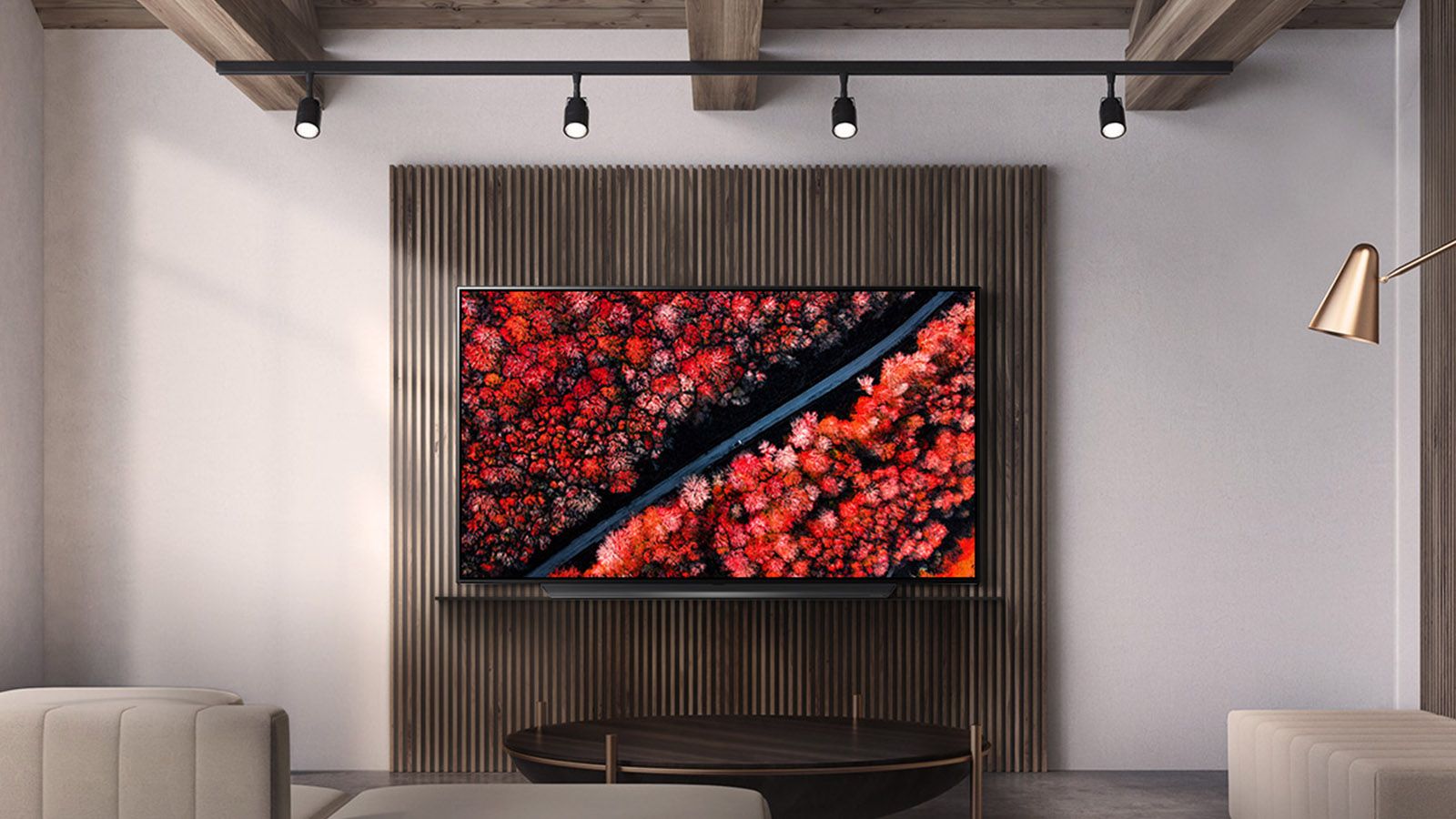
LG OLED C9 TV - 4.5 / 5
| FOR | AGAINST |
|---|---|
|
|
LG OLED55C9
Design
- 4x HDMI 2.1, 3x USB
- LAN, Wi-Fi and AirPlay 2
The LG C9 looks similar to last year's C8 model, with a bezel-less screen and a chassis that is mere millimetres thick at the top and only 46mm deep at the bottom. The back of the panel has a dark brushed metal finish, and the overall look is a pleasing combination of minimalism and class.
LG has reverted to previous years in terms of the stand, but like the previous design it still redirects the sound from the downward-firing speakers towards the viewer. The rear of the stand is also much heavier, thus proving better support and stability.
Unlike other manufacturers LG has adopted HDMI 2.1 on its 4K OLED TVs, and as a result they support new features like higher frame-rates up to 120Hz, dynamic metadata for high dynamic range content (HDR), eARC (enhanced audio return channel), variable refresh rates (VRR), and auto low latency mode (ALLM).
Alpha 9: The next generation
- HDR Support: HDR10, HLG, and Dolby Vision
- Processing engine: 2nd Gen Alpha 9
The LG C9 uses the same 4K (3840 x 2160) 10-bit OLED panel as last year's C8 model, but now includes the second-generation Alpha 9 processor. This uses deep learning algorithms to analyse content and establish the genre and quality, before optimising that image using upscaling, noise reduction and other enhancement tools.
LG has also added AI Brightness, which uses a sensor to detect ambient light, optimising the brightness to improve the visibility in dark areas of the image. Speaking of dark areas, the blacks remain superb thanks to OLED's self-emissive nature, but LG has also improved the level of detail just above black.
The C9 not only delivers deep blacks and shadows, but renders pixel-level precision when it comes to the bright parts of the picture. Since OLED is self-emissive and thus doesn't rely on local dimming, there's no danger of blooming or haloing - those white 'outlines' around specific subjects against dark backgrounds - just clearly defined highlights. As an added bonus, OLED also has very wide viewing angles.
The decontouring feature introduced in 2018 now has its own menu setting called Smooth Gradation. The previous incarnation was part of noise reduction, which often robbed the image of fine detail. The new separate control avoids this, and proves very effective at reducing and even eliminating banding in heavily compressed material.
Motion Pro was also introduced in 2018, and this feature literally inserts black frames, improving motion but darkening the image and sometimes causing flicker. LG has made improvements, reducing both the loss of light and the flicker. As a result it's now a useful feature, especially with standard dynamic range content (SDR) where the darker picture can be brightened.
Motion handling is very good but there is occasional stutter, especially with 24p content. The C9 uses frame interpolation to increase the frame rate up to 120Hz and eliminate stutter, but this approach results in the soap opera effect - where movies have a more Eastenders look to their motion, like a home video. It also supports a variable refresh rate (VRR), although the Xbox One is currently the only source for this.
Speaking of gaming, the C9's input lag in game mode is staggeringly low at 13ms, regardless of whether you're playing in HD, 4K, SDR or HDR. So serious gamers are sure to be delighted by the response time, as well as the support for VRR and ALLM. Some may have concerns about image retention during marathon gaming sessions, but LG employs safeguards to mitigate the risk.
There's a large number of picture modes to choose from, too, but most will probably be happy with the default Standard setting. This delivers bright and punchy images, but make sure you turn the energy saving option off. Those looking for greater accuracy should choose the ISF modes in SDR, with the Cinema presets best when watching HDR10, HLG, and Dolby Vision content.
There are also extensive calibration controls, allowing for improvements to the already impressive image accuracy. The auto-calibration feature has been upgraded, with the C9 even able to generate its own test patterns. As a result anyone with the necessary colour meter and software will be able to create incredibly accurate images at the press of a button.
AI-enhanced images
The LG C9 takes the strengths of its OLED panel, adds the sophisticated image manipulation afforded by its AI-enhanced Alpha 9 processor, and delivers some of the best SDR pictures we've ever seen.
The blacks are deep and inky, but this hasn't been achieved at the expense of shadow detail. The highlights are produced with exacting precision, the colours are natural and the overall image is incredibly accurate.
The SDR and HDR pictures both benefit from the C9's superior picture processing with lower resolution content effectively upscaled, and more compressed content delivered with improved detail and less artefacts or noise in the image.
The wider colour gamut is deeply saturated and realistic, reproducing all of the DCI-P3 colour space and doing so with impressive accuracy. As a result, HDR images have colours that appear more nuanced, especially when combined with the higher dynamic range.
The C9 tonemaps HDR content with impressive accuracy. The Dynamic Tone Mapping is highly effective at addressing the inherent limitations of OLED. By analysing the HDR on a frame-by-frame basis the tone mapping can be dynamically adjusted to create better HDR images.
Any issues?
The LG C9 rarely put a foot wrong during our testing, with the only real issues relating to OLED's inherent limitations. The peak brightness for HDR measured 780 nits, which is a far cry from the kind of highlights that LCD can reach. An OLED panel also struggles to light up the entire screen, so HDR images that are bright overall can prove problematic.
However, the pixel-level precision and pitch blacks of OLED mean the HDR retains plenty of impact despite lower nit numbers. The Dynamic Tone Mapping feature also does a great job of boosting the overall brightness of HDR10 images without compromising the creator's visual intent. In addition the dynamic metadata contained in Dolby Vision helps deliver a superior image.
While the C9 supports HDR10, broadcast HLG, and Dolby Vision, it doesn't include HDR10+. This alternative version of HDR with dynamic metadata is starting to gain traction, and is now supported by Amazon and 4K Ultra HD Blu-ray. More importantly, both Panasonic and Philips offer OLED TVs that support both Dolby Vision and HDR10+, putting LG at a disadvantage.
Last year owners of 2018 LG OLEDs reported issues with flashing, black crush and macro-blocking in darker parts of the image. These issues appear to have been addressed in this year's models. There were no signs of flashing or black crush in the image, and although macro-blocking was occasionally visible this was related to poor quality compression rather than the C9 itself.
Smart features
- webOS 4.5 with ThinQ AI
- Google Assistant
- Amazon Alexa
The LG C9 boasts webOS 4.5, which is the latest version of the company's highly intuitive and comprehensive smart platform. LG has added more machine learning algorithms to help users find and order their favourite content.
There's a new second tier that appears above the existing launcher bar when you highlight a specific app, and this additional layer uses an AI-enhanced Preview feature to make recommendations based on viewing habits and even the time of day.
The platform is as comprehensive as ever, with Netflix, Amazon, YouTube, Now TV, Rakuten, and all the UK TV catch-up services. Thankfully there's also a new Intelligent Edit feature that lists your apps based on how often you use them, making it easier to navigate all this choice.
The Home Dashboard has been expanded to show all connected mobile devices, inputs and home IoT devices, thus allowing you to monitor and control any connected device in your smart home from a single hub. LG will also be adding support for Apple's Homekit later in 2019.
LG's TVs already include Google Assistant built-in, but if that's not enough for you then Amazon Alexa will be added via a firmware update as well. So your AI-enhanced C9 will not only make recommendations but offer voice control and two different smart assistants.
The C9 is now able to auto-detect devices connected by HDMI, and you can even use your LG smartphone to make the setup process easier. There are more images in the Gallery section, a new mini-browser, and a TV channel banner with added recommendations.
Sound quality
- AI Sound
- One Touch Sound Tuning
- Dolby Atmos
The LG C9 might be ultra slim, but thanks to some fairly nifty acoustical research it actually sounds surprisingly good. For a start the TV can improve the quality of its audio by using the One Touch Sound Tuning feature to optimise the settings based on the characteristics of a room.
This clever feature uses the mic built into the Magic Remote to take measurements from the main listening position and analyse the room's acoustical signature. You can compare the before and after optimisation, and there's a choice of modes: Standard, Bass Boost, and Treble Boost.
The combination of a stand that fires sound towards the listener and the acoustic tuning results in an impressive audio performance. The front soundstage is wide and detailed. Music spreads out from either side of the screen, effects are nicely defined, and there's a surprising degree of well-integrated bass. Dialogue is also clear and prioritised on the action.
The speakers are based around a two-channel configuration, but the new AI Sound mode applies psychoacoustic trickery to take those two channels and turn them into virtual 5.1 surround sound. This processing creates the illusion of a more immersive surround presence, but within the wider sound staging the dialogue remains focused on the screen.
The C9 also supports Dolby Atmos, decoding the discreet channels in an Atmos track, and using psychoacoustics to create a more immersive experience. This is superior to the AI Sound feature because the results are based actual metadata, rather than analysing the audio and applying AI-enhanced processing to simulate a virtual surround experience.
LG OLED55C9
To recap
LG uses AI processing to refine its latest OLED 4K TV, creating a superior image with more depth, saturation, and detail. The super-smart operating system, incredibly low input lag, and impressive sound are added bonuses, with only a lack of HDR10+ disappointing.

